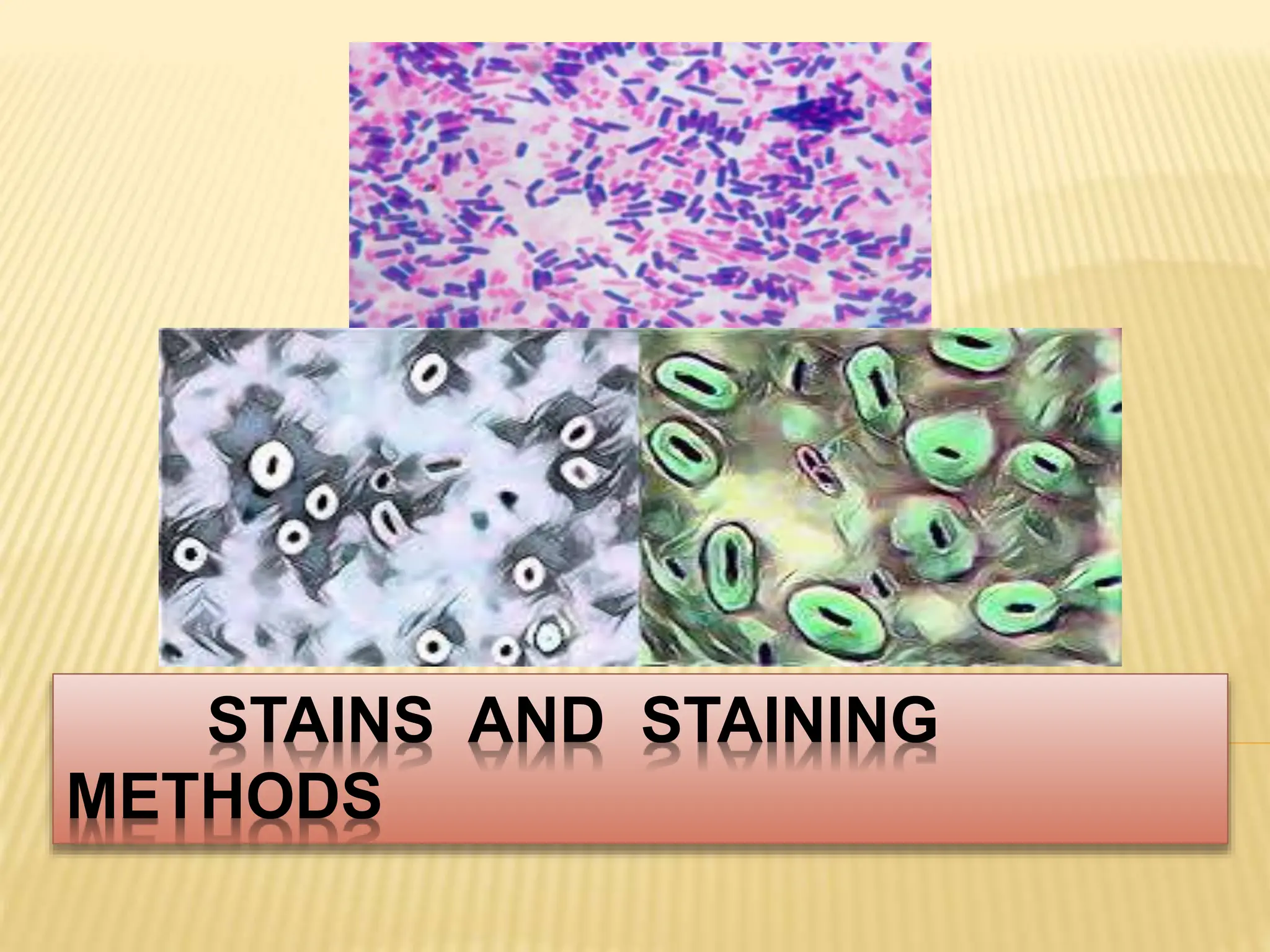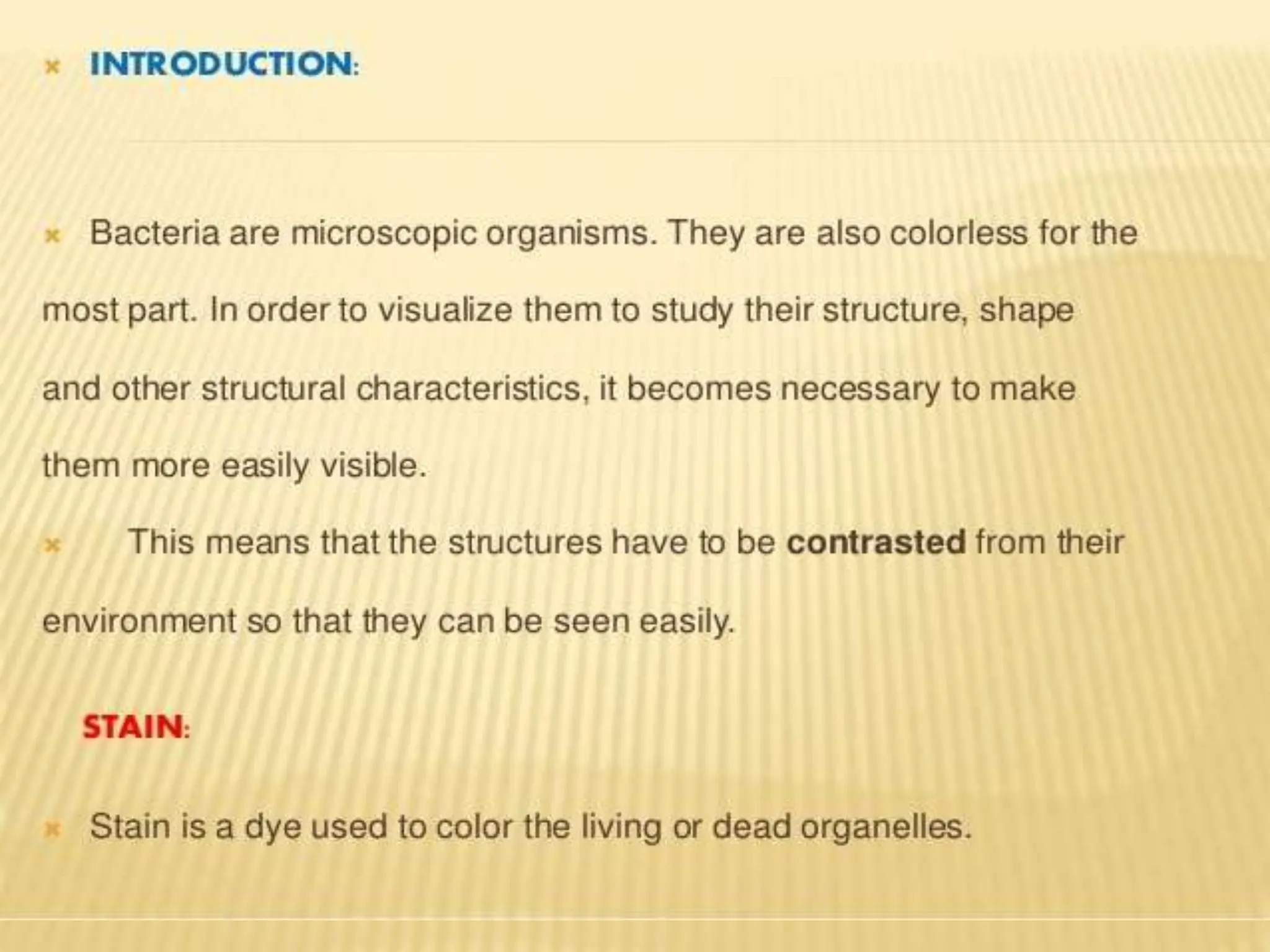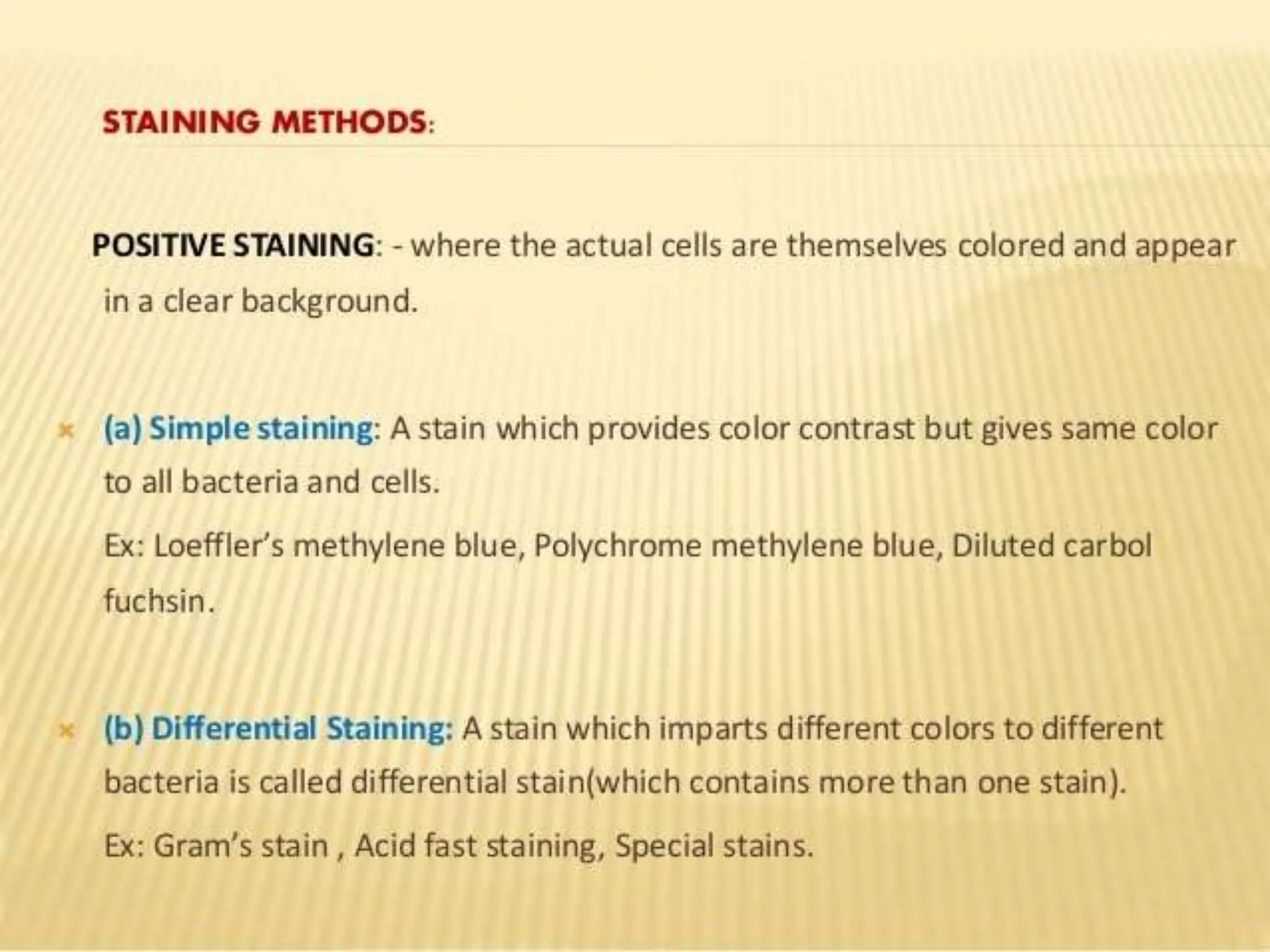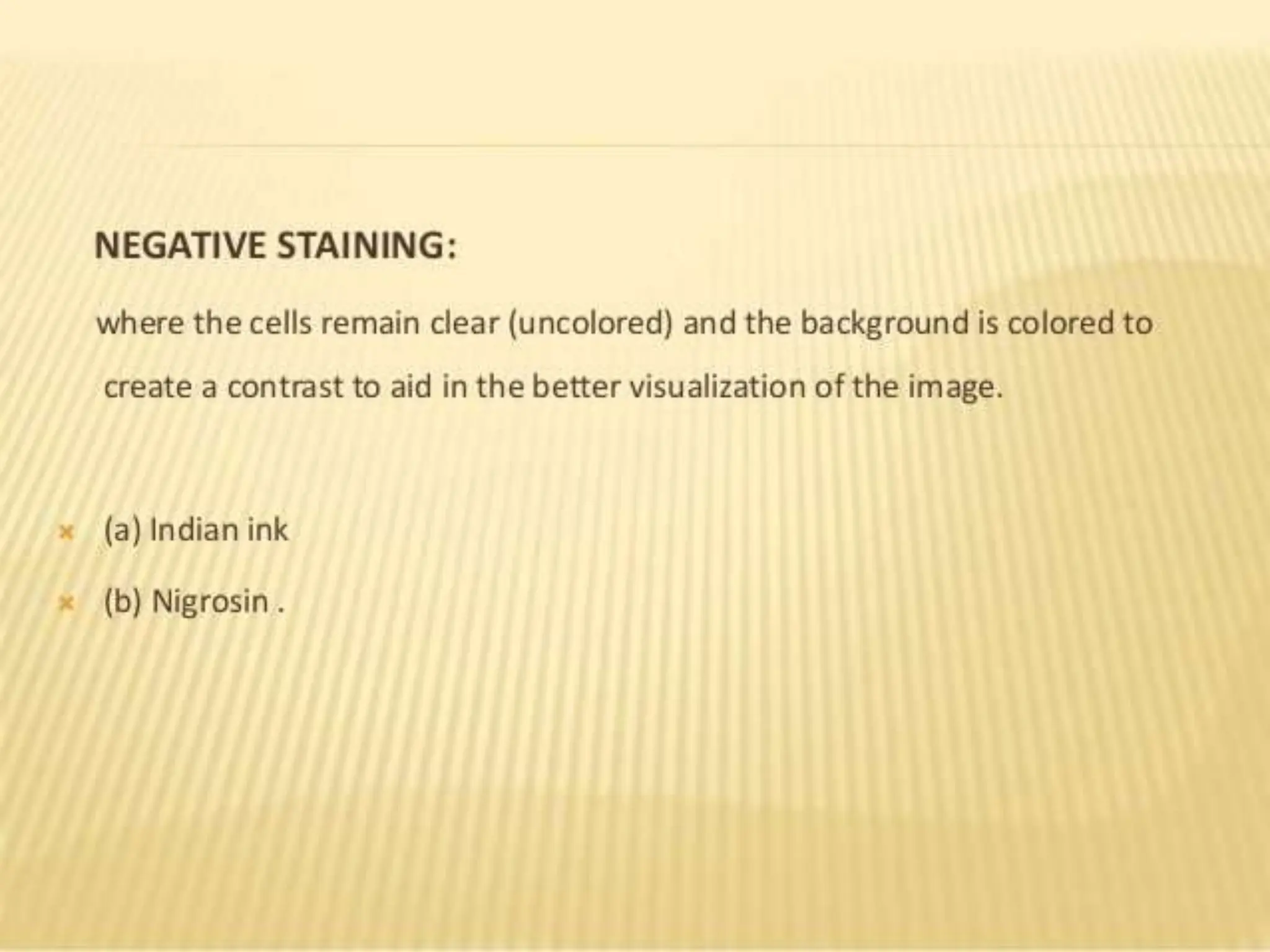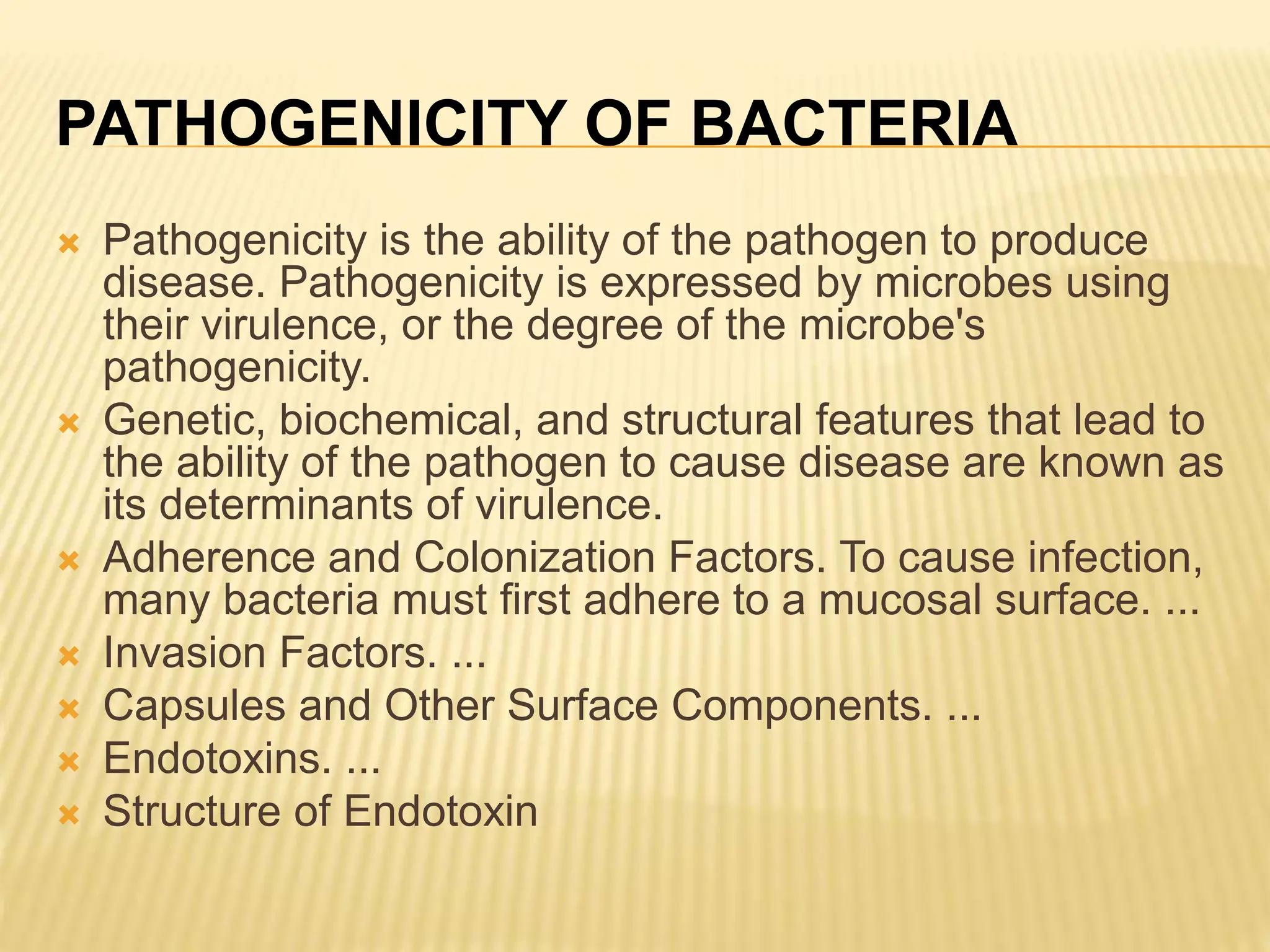The document discusses virulence and pathogenicity, explaining that virulence is the degree of pathogenicity of an organism, with virulence factors enabling a pathogen to invade and damage a host. It also covers bacterial reproduction, highlighting binary fission and the role of endospores in survival, as well as techniques for isolating and identifying microbes. It emphasizes the importance of understanding these factors in medical research for developing treatments and vaccines against infectious diseases.
